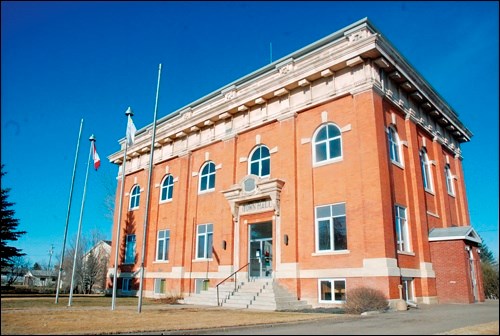The Battlefords Historic Opera House Restoration Project completed a series of consultations around the new role of the opera house recently, and received "tremendous support" from those who attended for opera house renovations.
The renovated opera house will be a cultural and historic location, but also a concert space, and potentially an exhibition space. The community consultations were conducted to assess the needs of the community, and to see how the opera house would fit with other similar local spaces. These live consultations were a follow-up to a series of surveys conducted by the BHOHRP over the last two months.
The events saw a large variety of attendees, including city council members and mayors from both Battleford and North Battleford, in addition to representatives of more than 30 cultural organizations from the local area. In the words of Dean Bauche, the events saw a "full and comprehensive representation of groups and individuals" of the local cultural landscape.
The meetings were divided into three nights, each dedicated to a different demographic. The first night was dedicated to visual artists, the second to performance artists and the third meeting was for the general public. Each of the meetings lasted around three hours and was facilitated by Marie Kjaargaard.
The meetings were broad in scope, focusing on minutiae like the design of the stage and larger questions like the extent to which the renovations to the building should be historically accurate. Above all, though, the meetings were focused on how the renovated opera house will fit in with other similar venues in the community, and how it will maintain a distinct identity among the community's performance spaces.
Every night brought "entirely new perspectives" about future uses of the opera house, Kjaargaard said. Rather than being redundant, the three meetings were dynamic and "largely showed the creative nature of the people who were offering input."
Each group came up with distinct, though not necessarily conflicting recommendations.
The next aspect of the feasibility study is an examination of comparative models that already exist. Biggar, for example, has rebuilt their theatre and Wolseley rebuilt their historic opera house/town hall.
Also discussed was the creation of an online artist's directory for the Battlefords that would list all local artists along with samples of their work and contact information. The cultural directory is intended as the "go to" source for information on individuals and groups active in arts and culture in the Battlefords, and will be regularly updated.
The directory, when finished, will connect the local arts community in unprecedented ways - making it far easier to hire a musician for an event, for example, or helping dancers find musicians to accompany them.
The website would also feature a regularly-updated calendar of events for the community. The meetings revolved around the structure the website would take and what is required to make the directory successful. Common Ground Collective members are now actively seeking funding, conducting research, developing prototypes, gathering contact information, exploring business partnerships and continuing to develop network and community support for the project.
Common Ground Collective expects the cultural directory to be up and running within the year.



.png;w=120;h=80;mode=crop)
